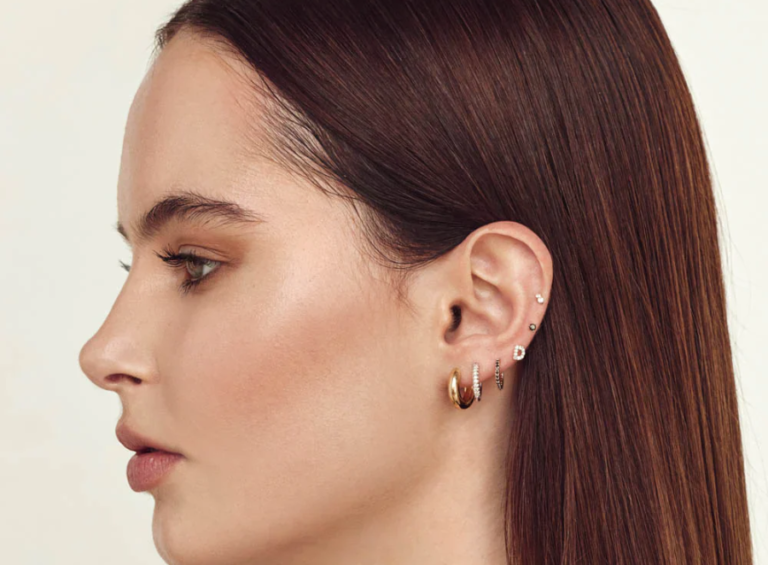Helix piercing is a stylish choice for anyone looking to enhance their ear jewelry collection. In this guide, we will delve into the world of helix piercing, discussing its types, the piercing process, aftercare, and ways to style your new accessory. Whether you’re new to piercings or a seasoned pro, this article will equip you with the knowledge you need.
What Is a Helix Piercing?
A helix piercing is a type of body modification that occurs on the upper cartilage of the ear. It has become increasingly popular due to its unique placement and the variety of jewelry options available. This piercing allows individuals to express their personal style while also providing a distinctive look.
Types of Helix Piercings
When considering a helix piercing, it’s important to know the different styles available:
- Standard Helix: A single piercing on the outer upper ear cartilage, ideal for a classic look.
- Double Helix: Two piercings in close proximity, offering a layered effect.
- Triple Helix: Three piercings in a row, perfect for a bold and trendy statement.
- Forward Helix: A piercing positioned at the front of the upper cartilage, adding an edgy twist.
- Industrial Piercing: This style connects two holes with a single barbell, creating a unique and striking appearance.
Choosing the right style depends on your aesthetic preferences and comfort level.
The Helix Piercing Process
Understanding the helix piercing process can help alleviate any anxiety about the procedure. Here’s what you can expect:
- Consultation: You’ll discuss your options with a professional piercer, who will help you choose the best location and jewelry.
- Preparation: The piercer will clean your ear and mark the designated spot for the piercing.
- The Piercing: A sterilized needle is used to create a quick hole in the cartilage.
- Jewelry Insertion: Quality jewelry is placed immediately to reduce discomfort and promote healing.
Pain Levels and Recovery
Many people worry about the pain associated with a helix piercing. Generally, the pain is described as a brief, sharp sensation followed by a dull ache. Since the piercing is in cartilage, many find it more tolerable than fleshier areas.
After the initial discomfort, minor swelling may occur, but this typically subsides within a few hours. If you experience prolonged pain, it’s advisable to consult your piercer for guidance.
Aftercare for Helix Piercing
Proper aftercare is crucial for a successful healing process. Here are essential tips for caring for your helix piercing:
- Regular Cleaning: Clean your piercing twice daily with a saline solution or an approved aftercare spray.
- Avoid Touching: Keep your hands away from the piercing to prevent introducing bacteria.
- Leave Jewelry Untouched: Do not change or remove the jewelry until the piercing is fully healed, which can take several months.
- Stay Dry: Avoid submerging your piercing in water, such as swimming pools or hot tubs, until it has healed.
Recognizing Infection Symptoms
It’s important to be aware of signs of infection after your helix piercing. Common symptoms include:
- Increased redness or swelling
- Unusual discharge, particularly if it’s yellow or green
- Persistent pain or throbbing
- Fever or chills
If you notice any of these symptoms, contact a healthcare professional promptly.
Selecting Jewelry for Your Helix Piercing
The jewelry you choose for your helix piercing can significantly impact both comfort and style. Consider the following options:
- Hoops: Versatile and trendy, available in various styles and sizes.
- Studs: Classic and elegant, ideal for everyday wear.
- Barbells: Great for more complex piercings, such as industrial styles.
Always opt for hypoallergenic materials, like titanium or surgical stainless steel, to minimize irritation and allergic reactions.
Styling Your Helix Piercing
Your helix piercing provides a fantastic opportunity for creative expression. Here are some styling ideas:
- Layered Looks: Combine different jewelry types for a personalized touch.
- Color and Design: Choose pieces that reflect your personality through color and unique designs.
- Asymmetrical Styles: Embrace an asymmetrical look for a modern twist.
Cost of Helix Piercing
The cost of a helix piercing can vary based on factors such as location and the piercer’s expertise. Typically, the procedure ranges from $30 to $100, with additional jewelry costs ranging from $20 to over $100.
Finding a Trusted Piercer
Selecting a skilled piercer is vital for a successful helix piercing experience. Here are some tips for finding the right professional:
- Research Reviews: Look for studios with positive customer feedback and a solid reputation.
- Check Credentials: Ensure your piercer is certified and follows health and safety standards.
- Ask About Experience: Inquire about their background and approach to aftercare during your consultation.
Cultural Significance of Helix Piercing
Helix piercing holds cultural significance in various societies. In many cultures, ear piercings symbolize rites of passage and personal expression. Understanding these meanings can deepen your appreciation for your helix piercing.
Dispelling Common Myths
There are several misconceptions surrounding helix piercing that can lead to confusion:
- It’s Painful: Most people find the pain manageable and brief.
- Infections Are Common: While infections can occur, they are often preventable with proper care.
- You Can’t Sleep on It: Many find ways to sleep comfortably, even with new piercings.
Conclusion
A helix piercing is an exciting addition to your body art collection. By understanding the procedure, aftercare, and styling options, you can confidently embrace your new piercing. Prioritize finding a skilled piercer and following proper aftercare practices to ensure a successful experience with your helix piercing.


